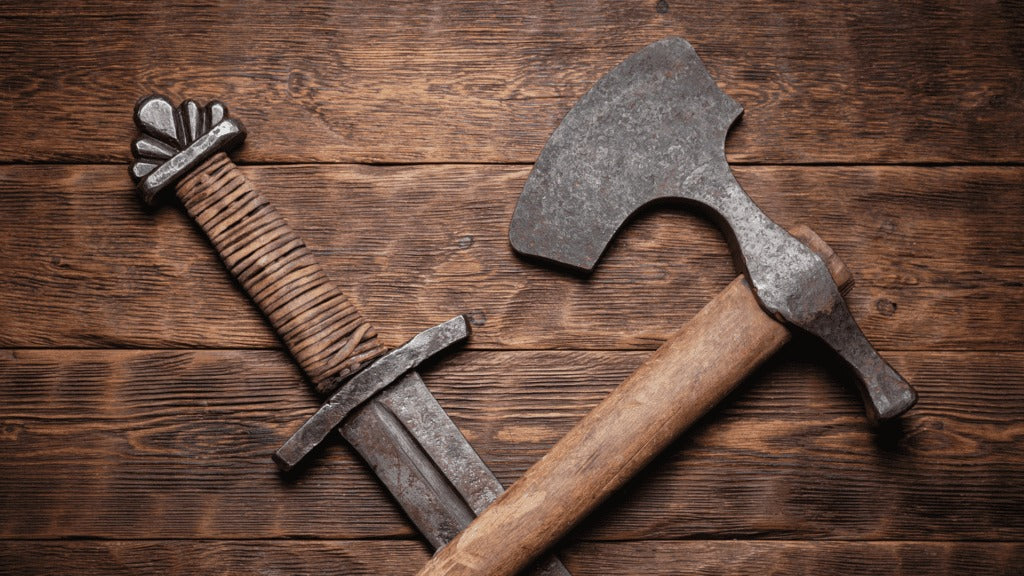
Axe vs. Sword: Which Was the Superior Medieval Weapon?
Medieval warfare saw a variety of weapons on the battlefield, but two of the most iconic were the axe and the sword. Both weapons had unique strengths and weaknesses, and their effectiveness depended on the warrior wielding them and the combat situation. This blog compares the axe and the sword to determine which was the superior medieval weapon.
The Medieval Axe: Brutal Power and Efficiency
The axe was a favored weapon of Vikings and other medieval warriors who valued its raw power and versatility.
Advantages:
- High Cutting Power: The axe’s weight and design allowed it to deliver devastating blows capable of cleaving through armor and shields.
- Easier to Produce: Compared to swords, axes were cheaper and simpler to manufacture, making them more accessible to common warriors.
- Versatility: Axes could be used both as melee and throwing weapons, adding to their battlefield effectiveness.
Disadvantages:
- Shorter Reach: Axes typically had a shorter range than swords, putting the wielder at a disadvantage against a longer weapon.
- Slower Recovery Time: Due to their weight, axes required more effort to swing and recover from a missed strike.
The Medieval Sword: Precision and Prestige
The sword was a symbol of status and skill, often associated with knights and elite warriors.
Advantages:
- Balanced Design: Swords offered a good combination of cutting, thrusting, and defensive capabilities.
- Speed and Precision: Lighter than most axes, swords allowed for quicker strikes and defensive maneuvers.
- Symbol of Nobility: Owning a sword was often a mark of status, as high-quality swords were expensive and required great craftsmanship.
Disadvantages:
- More Expensive: The skill and materials needed to forge a sword made it less accessible to lower-class soldiers.
- Less Impact per Strike: While swords could cut and thrust effectively, they lacked the raw stopping power of an axe against heavily armored foes.
Which Weapon Was Superior?
The superiority of the axe or sword depended on the combat scenario:
- Against Lightly Armored Opponents: Swords had the advantage with their speed and precision.
- Against Heavily Armored Opponents: Axes could deliver crushing blows, making them more effective against plate and chainmail.
- In Open Battlefield Combat: Swords offered more versatility and better reach, making them ideal for prolonged engagements.
- In Close Quarters Combat: Axes, with their brutal stopping power, were devastating in tight, hand-to-hand encounters.
Conclusion: A Matter of Purpose and Preference
Rather than declaring one superior to the other, it is more accurate to say that both weapons served different roles in medieval combat. The sword was a refined weapon suited for trained warriors, while the axe was a powerful and accessible tool of destruction.
At Nordic Smith, we celebrate medieval weaponry with a premium selection of handcrafted swords and battle axes. Explore our collection to find the perfect piece of history for your armory!
